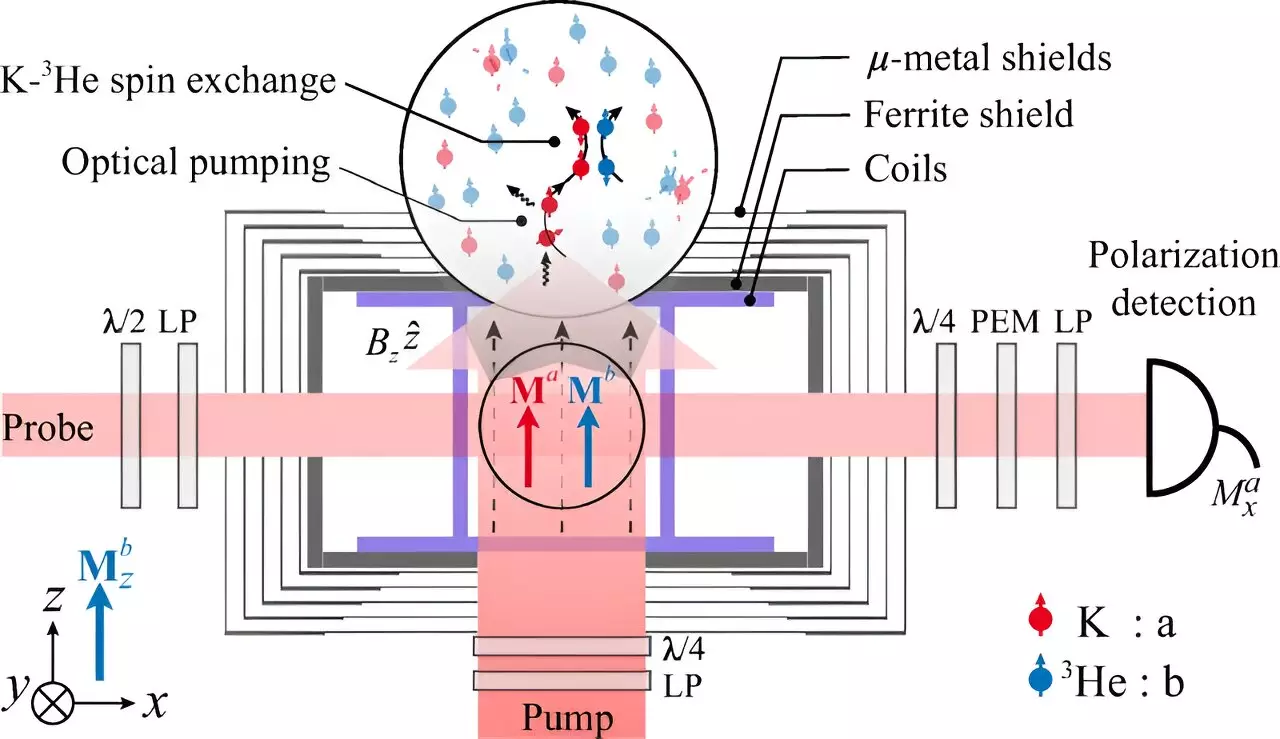Recent advancements in precision measurement have led researchers to explore the complexities of spin interactions, transcending traditional particle physics paradigms. A significant discovery was made by a research team from the University of Science and Technology of China (USTC) that unveiled the Fano resonance interference effect among mixed atomic spins. Their findings, detailed in a notable publication in **Physical Review Letters**, have not only opened doors to improved measurement techniques but also significantly reduced magnetic noise interference by over 100 times. This reduction in noise paves the way for enhanced precision in various fields, particularly those aiming to unveil the mysteries of dark matter and exotic spin interactions.
The importance of understanding these exotic spin interactions cannot be overstated. They represent a frontier in experimental physics, where conventional models often fall short. By probing these interactions, scientists hope to gain insights into fundamental forces that govern the universe, reveal the nature of dark matter, and explore phenomena that extend far beyond our current understanding of the physical world.
In conducting experiments related to weak magnetic fields, researchers have often faced the challenge of background noise, which significantly interferes with measurements. Early atomic comagnetometers were designed to mitigate magnetic field fluctuations, but their limitations in the low-frequency regime hindered broader exploration into high-frequency phenomena. Thus, the need for effective solutions against magnetic noise was paramount.
The essence of the recent findings lies in a novel method that capitalizes on magnetic noise self-compensation effects. By employing a combined system of potassium (K) and helium-3 (3He) gases, the researchers have shown that they can improve measurement precision beyond the capabilities of past technologies. K atoms, polarized by laser light, function as a tool for reading nuclear spins in 3He, utilizing spin-exchange collisions to enhance the overall system’s stability.
Through intricate adjustments of bias magnetic fields, the researchers were able to control the interplay of atomic spins and external noise effectively. The method involved fine-tuning the angle between detection directions and the specific frequencies of external magnetic noise, leading to significant suppression of these noise components. This multifaceted approach demonstrates a comprehensive theoretical understanding that bridges practical experimentation and advanced physics concepts.
The results were striking: the researchers demonstrated a successful suppression of magnetic noise across a frequency spectrum extending from near direct current to 200 Hz. This achievement is revolutionary, as it presents new possibilities for high-sensitivity detection of pseudomagnetic fields, increasing the sensitivity limit to an impressive level of 0.1 fT/Hz^1/2. The implications of such advancements are profound, potentially allowing researchers to investigate previously inaccessible realms of fundamental physics.
The findings of this study not only represent a technical triumph but also signal a significant step forward in the quest to understand phenomena like dark matter and exotic spin interactions. As research delves deeper into these unknown territories, the refined capabilities in measuring weak magnetic fields could provide insights into the formation of the universe and its underlying structure.
Furthermore, the self-compensation technique could transform methodologies in various experimental setups, from astrophysics to condensed matter physics, allowing for broader applications across disciplines. As a consequence, scientists may be better equipped to identify subtle interactions that have previously remained obscured by background noise, enhancing the overarching quest for knowledge in fundamental physics.
The innovative approach to magnetic noise suppression introduced by the USTC research team exemplifies the dynamism of modern physics research. With its potential ramifications echoing across multiple scientific domains, this breakthrough may serve as a catalyst for future explorations into the enigmatic forces at play in our universe, ultimately extending our grasp over the fabric of reality itself.


Leave a Reply